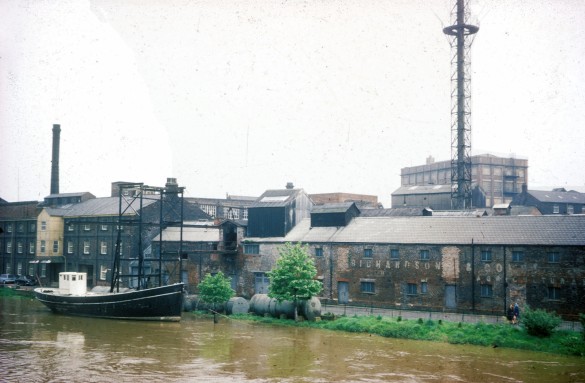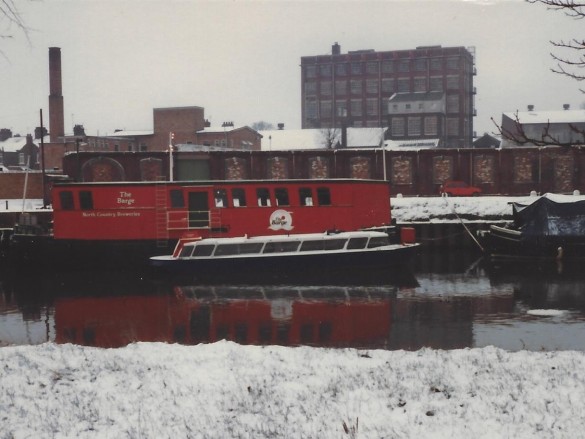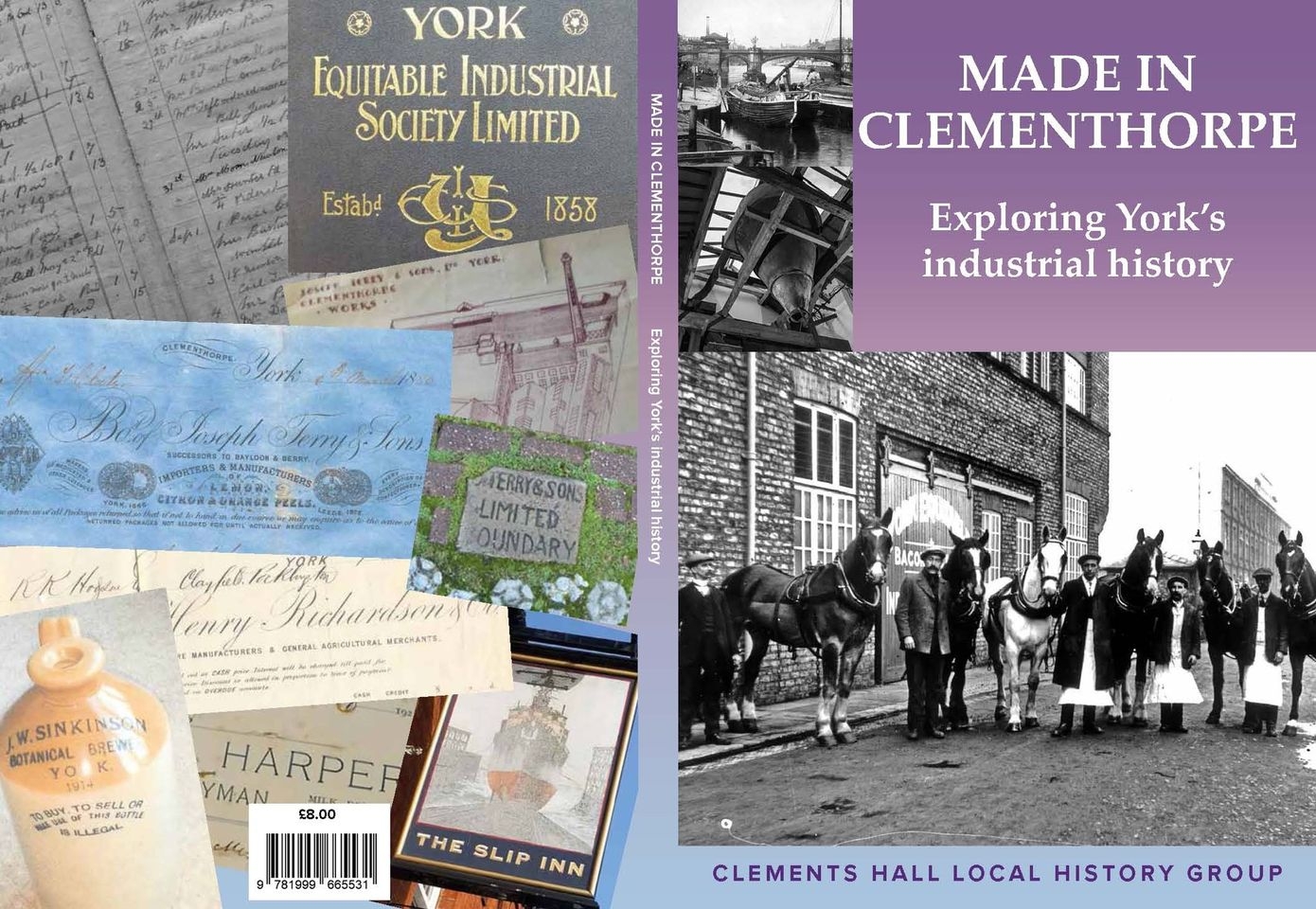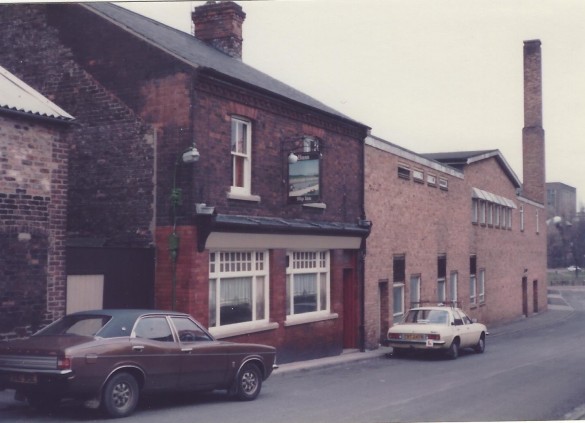12th September 2022
Made in Clementhorpe: our new book
We're looking forward to the launch of our new book next week, the fourth in our award-winning series.
'Made in Clementhorpe: exploring York’s industrial history' was researched and written by Group members, John Stevens and Mave Morris.
John said “We were inspired to research the industrial history of Clementhorpe after looking at the 1892 Ordnance Survey map of York. It shows Clementhorpe, perhaps nearing the peak of its industrial development, with a number of intriguing land uses, where there are now only houses and apartments.”
 Many people will be aware of the old Terry’s Confectionery Works and possibly the large Co-op depot and DeLittle’s Printing Works, but there were many other types of industry near the riverside at Clementhorpe, including a chemical manure factory. At its peak, in the late nineteenth century, Clementhorpe was a veritable hive of industry. Local entrepreneurs manufactured confectionery, boats, textiles and leather products, ironwork, food and drink – an astonishingly wide range of activities. Some of these men and women were noted local characters, playing a wider part in the social and cultural development of their community.
Many people will be aware of the old Terry’s Confectionery Works and possibly the large Co-op depot and DeLittle’s Printing Works, but there were many other types of industry near the riverside at Clementhorpe, including a chemical manure factory. At its peak, in the late nineteenth century, Clementhorpe was a veritable hive of industry. Local entrepreneurs manufactured confectionery, boats, textiles and leather products, ironwork, food and drink – an astonishingly wide range of activities. Some of these men and women were noted local characters, playing a wider part in the social and cultural development of their community.
Clementhorpe at this time would have been a very different place from the one we see today. It would have been noisy, dirty and smelly. The air would have been thick with coal smoke from the many domestic and industrial fires. The roads – largely unsurfaced – would have been muddy and sometimes really filthy. Large numbers of horses would have been using the streets, and many local residents also kept livestock. Drains and watercourses would have flowed with unmentionable liquids. The sounds and smells of industrial processes would have filled the air.
Shipbuilding has taken place here on the river bank since medieval times, and a slipway was built at the corner of Terry Avenue and Clementhorpe in 1836 by the Ouse Navigation Trustees. It was equipped with powerful winches and chains, and could accommodate a vessel up to 215 feet long. The Slip Inn reflects this activity, and was first recorded in 1840 as a beerhouse. It was rebuilt later, around 1902. This pub is the last surviving reminder of the old shipyard next door and survives today, winning CAMRA town pub of the year in 2020.
The Slip Inn with the former Co-op Bacon and Pie factory in 1984 (Rob Stay)

The short-lived Barge floating pub in 1984, before it sank the following year.






